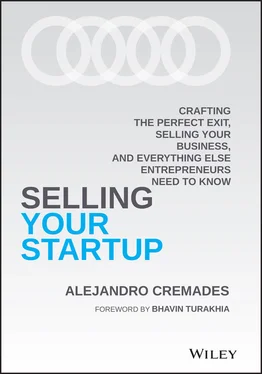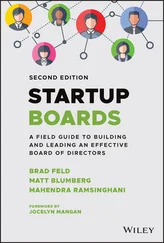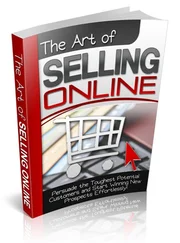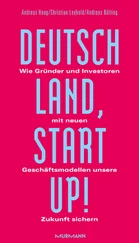Before our girls came home, our four-month-old daughter, Alya, had to undergo heart surgery. As she was wheeled into the operating room, I was preparing the agenda for a board meeting on the four acquisition offers the company had received. I wanted to be near my daughter that day, but the offers left us no choice.
One of the acquisition offers had a 24-hour expiration date. It was December 19 and the members on our board were about to check out for their holiday vacations. It was literally the only time we could get everyone together.
I was a wreck thinking about all the things that could potentially go wrong with Alya's surgery, but I had to sidebar my thoughts to get our board aligned. We unanimously agreed that pursuing an acquisition was in the best interest of our stakeholders. But how did we get to these four acquisition offers in the first place? It all began with me finding Mike Seversen.
I instinctively knew it wasn't wise for me to tread the transaction path alone, so I began searching for a master banker who would help me navigate any merger and acquisition (M&A) landmines and optimize my chances at a successful exit. To have the best outcome, the deal needed to be viewed not solely as a financial acquisition (all based on revenues and EBITDA) but more as a strategic acquisition.
But in meeting after meeting, I was greeted by more or less the same person: a suit-and-tie Wall Street guy with little to no operating experience. After speaking with tons of potential M&A advisors, I was getting desperate. I knew the kind of person I needed to make the deal a success, and I felt as though I was looking for a needle in a haystack.
Finally, after endless research and asking around, I had a major breakthrough. I connected with Mike Seversen. He was in every sense of the word a true rock star. Sure, he had all the bells and whistles you would expect: Stanford undergrad, MBA Harvard graduate, and a 26-year career in the mergers and acquisitions space, but that wasn't what sold me.
Mike had a rare, heightened emotional intelligence, as well as the operational experience from running his own entrepreneurial ventures. I knew that if anyone could pull off this transaction, it was going to be Mike working with me as a team. I was strong on the business development side and relationship building, and Mike was a wizard of operations, numbers, and creative strategies. He was also keenly skilled in navigating big egos.
Once Mike and I were on the same page, we presented the plan to the board. As soon as the plan received board approval, we immediately got to work.
We ended up with four letters of interest (LOIs) to buy our company. LOIs are the formal way acquirers tell you they are interested in buying your company and at what price, pending a due diligence process. (I'll explain these in more detail later in the book.)
So how did we generate these letters of interest?
First, we went ahead and prepared a list of all the companies we thought could show potential interest in acquiring Onevest. (We're talking here about a list with 300 leads.) We tried to cover every strategic angle we could think of that could trigger interest.
We wanted to target CEOs as opposed to your typical head of corporate development, who usually leads this type of initiative, because the path to a yes is far less risky when a deal comes through the CEO. We knew that if we penetrated the company via the CEO and were handed over to the corporate development team, the team wouldn't hesitate to report back to the CEO if it saw a good fit.
Once we populated our target list with outreach data, we went ahead and reached out to all of the CEOs. In parallel to reaching out to potential acquirers, we also put in motion the formal discussions with the firms that had already expressed direct interest in doing something strategic, which typically means an acquisition.
In essence, this ended up being a four- to six-month process from the start to narrowing down the seriously interested parties.
Out of the 300 leads, we had active conversations with at least 60 of them via phone calls and in-person meetings. From there, we had 25 companies that requested access to the acquisition memorandum (which is the document that lays out the story of your company and what's possible).
Ultimately, it was this process that led us to receive the four letters of interest. In partnership with our board, we ended up taking the LOI that we thought had the best terms and offered the greatest level of alignment with the acquiring management team.
From there, we went into due diligence for three months following the signing of the LOI, and we ultimately closed the deal, which was worth millions. But I can't tell you how many times the transaction nearly blew up.
When all was said and done on the due diligence side, we signed the legal paperwork, got approval from the shareholders, and made the announcement to the world.
Mike and I saw the entire process like a tennis match. He would volley the ball to me when I had to talk about vision or product, and I would volley the ball back to him when terms or negotiations came up.
It was good to remove myself from the difficult conversations about numbers, as well as important clauses in the agreement. This way, when things got tangled up, I could grab the phone and call the CEO directly to keep pushing things forward, sort of like good cop, bad cop.
One thing I knew for sure was that during this stressful process, Mike and I had each other's backs. From day one, we had implicit trust in each other, which I know was a foundational pillar of our success.
Funnily enough, similar to the feeling I had when I met my wife—a feeling of instant connection—I knew Mike was my other half in business. From that day forward, we never looked back.
Launching Panthera Advisors
After the transaction closed and we completed the transition period with Onevest, I called Mike and enrolled him into going into business with me.
I saw two things clearly. For one thing, Mike and I formed a very strong team. He had what I didn't have, and vice versa. But more critically, there was a clear gap in the market. No firm or expert owned the startup acquisition space.
In fact, when I was doing research trying to understand acquisitions for startups, it was like hearing the sound of crickets. Very little information was available to guide founders through this challenging and often complex journey. And I knew that if I had this problem, millions of others did, too.
Luckily, I was thrilled to find out that Mike was equally excited by the idea. As a result, Panthera Advisors was born, as well as the beginning of our journey as partners.
In our first two years, we represented clients in hundreds of transactions globally. Currently, 60 percent of our clients are in the US, and 40 percent of our clients are literally from every single part of the world.
When we get involved with clients, we become an extension of their team. We typically work with the CEO and management for four to six weeks preparing the strategy, the pitchbook with the financials, and the list of targets.
Once these are nailed down, we then go to market, and we're with the client in the trenches every step of the way—during meetings, calls, negotiations, and anything else that arises—until the deal closes.
My Unwavering Commitment to Entrepreneurs
As with Onevest, Panthera Advisors, hundreds of articles, YouTube videos, the DealMakers podcast, and The Art of Startup Fundraising , this book is the latest addition in my journey to empower entrepreneurs.
Ultimately, the intention of this book is to cover the startup acquisition information gap.
Читать дальше












